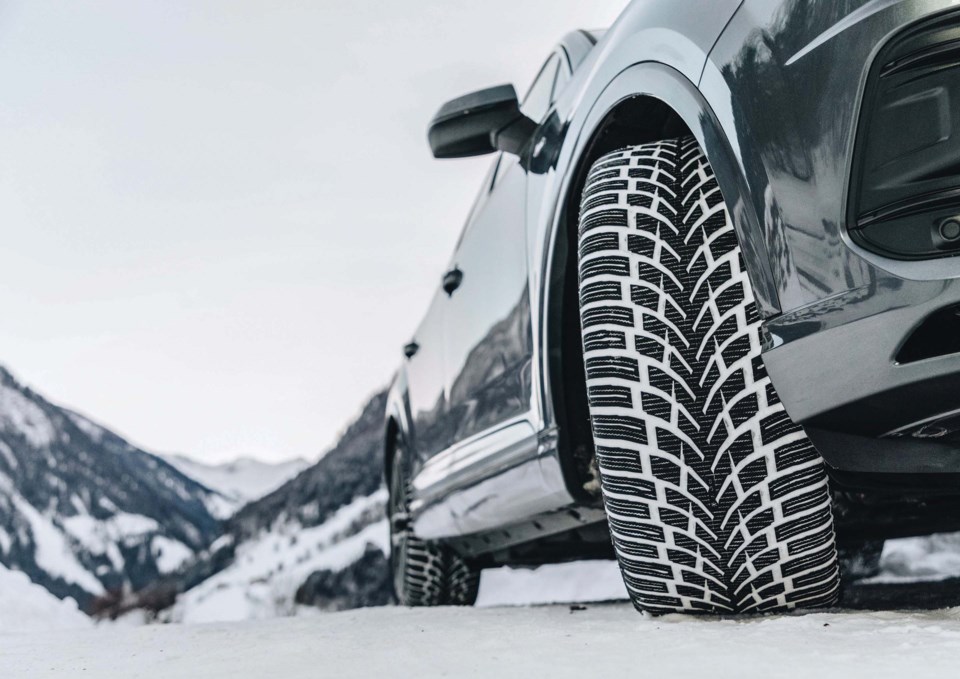Winter tires are an investment in safety — for you, your family and friends, and others sharing Delta roads.
Winter tires provide better traction and stopping performance than summer tires in cold temperatures and on wet, snowy, and icy roads. And traction may be the difference between safely driving on winter roads and being involved in a serious crash.
Winter tires or chains are also required on many highways in B.C. from Oct. 1 to March 31. For select highways, including mountain passes and rural routes in high snowfall areas, the date extends through April 30 to account for early-spring snowfall.
Legal requirement for winter tires
A winter tire must be in good condition, with a minimum tread depth of 3.5 mm (5/32 inches).
Both the 3-peaked mountain/snowflake and all-season Mud and Snow (M+S) tires meet the legal requirements for winter tire designation in B.C. Winter tires with a 3-peaked mountain and snowflake symbol provide good winter driving performance, especially in harsh winter conditions. They outperform mud and snow tires at temperatures of 7 C or lower. The natural rubber compound in these tires helps them to stay soft and flexible in colder temperatures.
Chains on summer tires are not an acceptable substitute for legal winter tires on signed B.C. highways.
Drivers without the proper winter tires in good condition driving on designated B.C. highways can be fined $121.
Some tips about winter tires:
- Make sure they match
All four tires need to match in size, tread type, and depth. You need at least two matching winter tires on the primary drive axle, even for a 4X4 vehicle. Using different types of tires compromises stability and could cause your vehicle to fishtail.
- Check wear and pressure
Always check the wear of your winter tires before installing them. Monitor tire pressure often as it can drop in cold weather.
- Carry chains or other traction devices
Passenger vehicles may use alternative traction devices such as chains with their winter tires. Know how to put them on and test them for performance in winter conditions before using them.
Shift into Winter is an annual campaign with the goal of zero winter weather-related motor vehicle crashes on B.C. roads.


